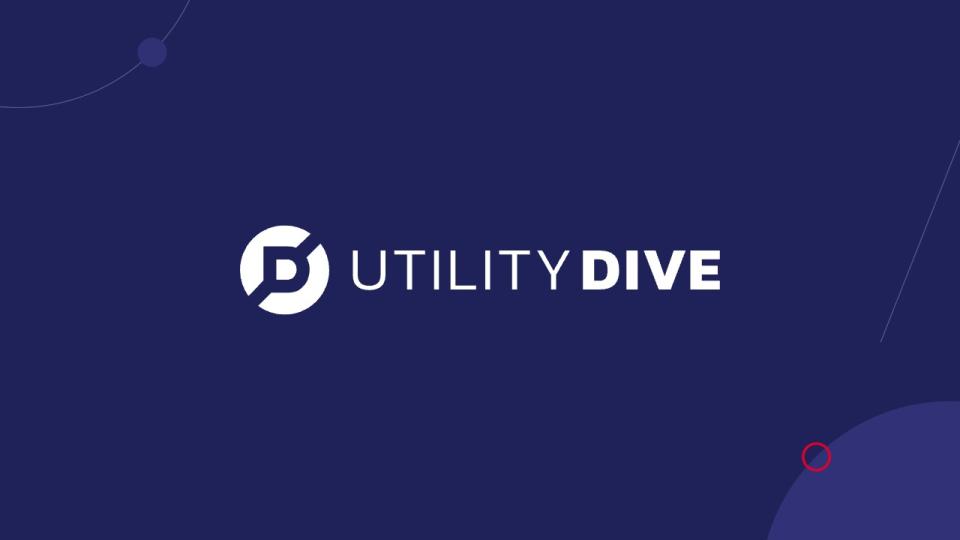Grid technology could save billions but for a policy vacuum

This story was originally published on Utility Dive. To receive daily news and insights, subscribe to our free daily Utility Dive newsletter.
Neil Chatterjee is a former chairman at FERC and is now a board member at Ampacimon and senior advisor, global regulatory, at Hogan Lovells.
The electric transmission grid is the limiting factor for economic development in many communities across America. Energy communities looking to build generation and export power are discovering that the cost of grid upgrades stops that development. New manufacturing facilities face the same delays, costing jobs.
Since my time at the Federal Energy Regulatory Commission, leaders have been working on solutions to ensure that the American transmission grid supports a growing and competitive economy, at a fair cost to customers. But these changes aren't coming fast enough, and supply chains for transmission equipment are getting tighter in a global race for the future of energy.
Poles and wires aren't the only way to add transmission capacity. Grid Enhancing Technologies, or GETs, are sensors, controls and software that maximize the value of the existing grid. They usually find 20%-40% more capacity, which would return billions of dollars in benefits to consumers every year. Separate studies by leading engineering firms Quanta Technologies and the Brattle Group found that using GETs in generator interconnection could reduce wholesale energy costs nationwide by over $5 billion per year. GETs can also reduce grid congestion — when transmission infrastructure limits the delivery of lowest-cost power — which came to over $20 billion in 2022. GETs could have saved $2 billion-$8 billion in grid congestion every year for the past decade. GETs also mitigate the impacts of grid outages and find or create system flexibility that improves reliability.
These tools are more widely adopted outside the U.S. Countries that have modified the traditional cost-of-service business model to reflect changing grid needs are reaping the rewards. Domestically, low-cost operational technologies are not part of the utility business model — they are only compensated for building new infrastructure (known as "capital expenditures.")
The U.K. now combines operational and capital spending by the utility and has performance incentives for cost-saving solutions. The incentives work: the U.K. has groundbreaking deployments of two types of GETs: Advanced Power Flow Control and Dynamic Line Ratings.
Belgium started deploying Dynamic Line Ratings, or DLR, in 2008. Their technology measures the real-time capacity of transmission lines, which are otherwise used far below their potential. DLR has allowed massive expansion of Belgian wind generation by unlocking grid capacity, saving 500,000 euros in a single day by increasing line capacity to deliver low-cost power.
The clock is ticking. The U.S. is 16 years behind Belgium and FERC has had explicit direction from Congress to address this since the Energy Policy Act of 2005. The commission is directed to create incentives to "encourage deployment of transmission technologies and other measures to increase the capacity and efficiency of existing transmission facilities and improve the operation of the facilities."
While I chaired the FERC, we held the first workshop on Grid Enhancing Technologies in 2019, followed by a Notice of Proposed Rulemaking in 2020 that included proposed incentives for transmission technologies. My colleagues continued with a workshop on a shared savings incentive model for GETs, similar to the U.K. policy but more limited in scale. This month, Senators Peter Welch, D-Vt., and Angus King, I-Maine, and Representatives Kathy Castor, D-Fla., Paul Tonko, D-N.Y. and Scott Peters, D-Calif., introduced the Advancing GETs Act, which would require FERC to move forward with the proposal to allow utilities to propose GETs projects with significant consumer benefits and be compensated for unlocking value quickly and at very low cost.
But incentives aren't FERC’s only tool for transmission grid modernization.
In January, the largest electricity market in the United States, the PJM Interconnection, reaffirmed a proposal it shared two years ago with FERC — that regions could require deployment of Dynamic Line Ratings on power lines that create over $2 million in congestion costs every year. PPL Electric Utilities added their own comments, noting that the DLR systems have performed without interruption for two years, saving tens of millions in congestion costs and supporting reliability in extreme weather.
Incentives and requirements are both essential tools to change utility practices. The PJM threshold would put Dynamic Line Ratings on the lines where they will undoubtedly pay for themselves. The shared savings incentive could encourage utilities to find high-value applications — potentially by combining multiple GETs.
FERC's proposed transmission planning rule requires regional plans to study Dynamic Line Ratings and Advanced Power Flow Control. This would be a leap forward for America's grid, but FERC can't stop there. Further, specific requirements will be needed, and incentive reform will drive utilities toward an optimized transmission grid. As more generation and storage plug in at the distribution level, we'll also have to apply these tools on the lower voltage grid. This is another reason utilities must put GETs in their toolboxes today.
